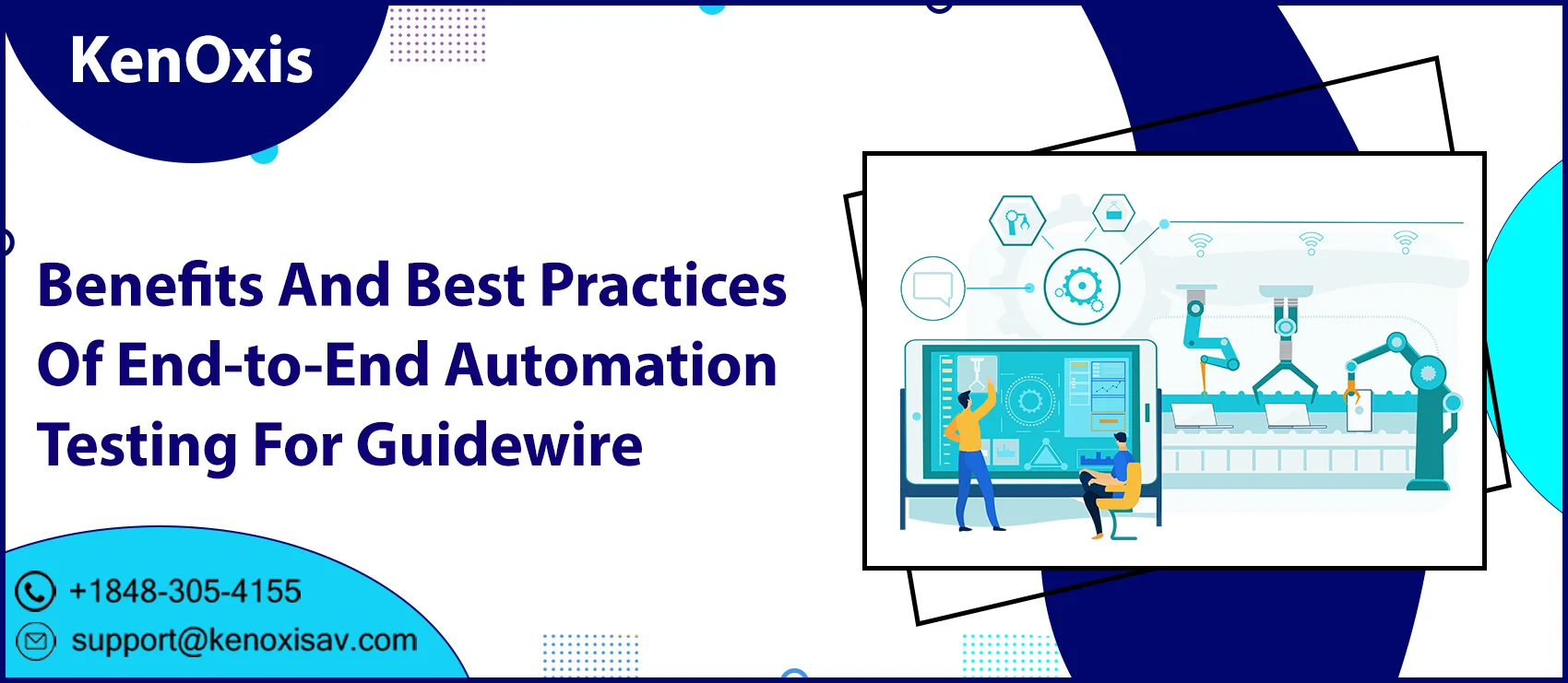Benefits of Guidewire’s End-To-End Automation Testing Guidewire solutions feature end-to-end automation testing that accelerates the process. It does so by automating repetitive operations and minimizing human error. This results in increased effectiveness and significant time savings.Quality control is essential in quick-paced software development to guarantee applications’ dependability and efficiency. Therefore end-to-end automation testing like Guidewire Testing has become a potent method for properly evaluating software products and has many advantages.
By leveraging Guidewire testing, teams can complete and release updates more quickly. Thanks to Guidewire Testing Framework’s simplicity and support for behavior-driven development (BDD).
This piece explores the benefits of Guidewire Testing and the best practices of end-to-end automation testing achieved expressly through Guidewire testing.
1. Enhanced Efficiency And Time Savings
Guidewire solutions feature end-to-end automation testing that accelerates the process. It does so by automating repetitive operations and minimizing human error. This results in increased effectiveness and significant time savings.
Due to variances in human execution and interpretation, manual testing is sometimes prone to discrepancies. End-to-end automated testing eliminates these inconsistencies by carrying out the tests precisely as specified. It ensures that the identical test circumstances are replicated, producing dependable and reproducible results.
2. Improved Test Coverage
End-to-end automation testing enables the execution of many test cases throughout the entire Guidewire application stack. It checks the functionality of individual parts and how different modules and systems interact.
The danger of unforeseen flaws is decreased by the rigorous validation of all crucial functionality, integrations, and workflows provided by this extensive test coverage.
3. Comprehensive Test Coverage
Interactions between various systems and components in the Guidewire environment can be automated with end-to-end automation testing.
Guidewire’s developers automate these systems to emulate real-world scenarios. This makes it possible to perform thorough testing. The automation ensures that all integrated modules, interfaces, and workflows operate as you intend.
Before deployment, you can leverage Guidewire’s testing services to identify potential flaws or vulnerabilities. Afterward, you can find, fix, and evaluate the entire end-to-end flow should the need arise.
4. Early Bug Detection
Guidewire’s automated tests can swiftly find faults and problems even in sophisticated systems.
Automating repeated test cases frees engineers to concentrate on fixing issues as soon as possible. Early bug detection improves the overall stability and dependability of Guidewire applications while reducing the time and effort needed for debugging.
5. Cost Reduction
End-to-end automation testing can cut costs in several different ways. It lowers the need for manual testing by automating repetitive tests, saving time and resources.
Additionally, locating and correcting problems earlier in the development cycle reduces the cost of fixing bugs after the product has been released or during production.
6. Reliable Regression Testing
Guidewire’s software frequently gets updated and improved. End-to-end automation testing makes reliable regression testing possible, guaranteeing that existing functionalities are maintained.
Guidewire’s automated tests are simple to execute to ensure that already validated features operate without a hitch, preventing regression problems and preserving the application’s general stability.
Best Practices for Guidewire’s End-to-End Automation Testing
1. Design of the Test Suite
The Test Suite must be designed carefully for successful end-to-end automation testing.
The test suite should include thoroughly collecting test cases for various Guidewire application scenarios and workflows. Additionally, it must prioritize crucial features and system components that need in-depth testing.
2. Loop of Continuous Feedback
Create a feedback loop that is constantly updated between the development team and the testing team.
Working together and communicating well is essential for solving problems, offering new perspectives, and raising the caliber of Guidewire apps. Engage both teams actively in the testing procedure to enable ongoing changes based on user feedback.
3. Error Handling
Design automation test scripts for errors to be handled and reported efficiently. Error messages that are clear and informative aid in locating the leading cause of mistakes, facilitating effective debugging and problem-solving.
The troubleshooting process is streamlined and takes less time to complete when errors are handled and reported correctly.
4. Performance Testing
For Guidewire applications, incorporate performance testing as part of the end-to-end automation testing strategy. Simulate various load conditions to gauge the effectiveness of the application.
Simulate several load scenarios to assess the application’s performance under different load circumstances.
Performance testing reduces the possibility of performance bottlenecks by ensuring the program can manage the anticipated user load and perform at its peak.
5. Security and Privacy
Maintain data security and privacy throughout the end-to-end automated testing process when testing data security and privacy. Ensure that any private or sensitive information utilized in computerized tests is handled securely. To abide by data privacy laws and protect sensitive information during testing, anonymize or obfuscate any personally identifiable information.
6. Test Data Management
Successful automated testing depends on effective test data management. Make sure the test cases accurately reflect real-world settings by creating reusable and representative test data sets that cover multiple scenarios. This makes it possible to test thoroughly and lowers the chance of missing essential instances.
7. Collaboration and Communication
Successful end-to-end automation testing depends on the development, testing, and business teams working together effectively. Regular gatherings and talks help set expectations, share knowledge, and quickly resolve problems or concerns.
This collaborative approach improves the effectiveness and overall quality of the testing process.
Conclusion
Best practices must be followed to get the most out of Guidewire’s end-to-end automation testing. End-to-end automation testing is still a crucial technique as the landscape of software development changes. It would help if you embraced these benefits by following Guidewire Testing’s best practices.
With Guidewire, development teams can confidently produce high-quality solutions by following these best practices and continuously enhancing testing techniques.
